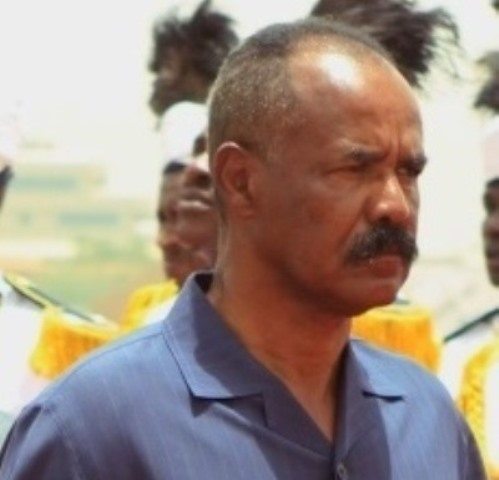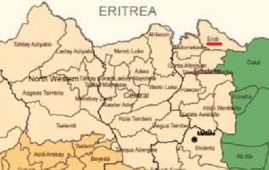[The following update, titled TFG and AMISOM forces pre-empt Al-Shabaab attack, is from A Week in the Horn, August 5 issue.]
TFG and AMISOM forces pre-empt Al-Shabaab attack
On Thursday last week, joint TFG [Transitional Federal Government of Somalia] and AMISOM [African Mission in Somalia] forces launched an offensive towards the Mogadishu Stadium area which is still a center of Al-Shabaab operations. The aim was to pre-empt any Al-Shabaab attempt to launch a Ramadan offensive from there, and to take advantage of Al-Shabaab’s reduced strength in Mogadishu. The initial advance made considerable progress along several of the roads leading towards the Stadium, taking over the Sodonka road and the Ali Kamin intersection, one of the points which control roads leading to the Bakhara market as well as towards the Stadium. AMISOM lost a tank at that point though it was from a fire caused by an electrical fault, not from Al-Shabaab action. These advances gained control of the Hamarbile area around Ali-Kamin but it has yet to be fully secured. There were some AMISOM casualties after Al-Shabaab fighters, wearing military uniforms, infiltrated the population. AMISOM and TFG are considering whether to evacuate the whole area to avoid civilian casualties before advancing further.
TFG and Ahlu Sunna wal Jama’a forces have also launched some other pre-emptive operations outside Mogadishu. In Gedo over the weekend, TFG units advanced from El-wak thirty kilometers towards Busar, a small town to the west of Bardere, now Al-Shabaab’s main center in Gedo region. They are now digging in there, waiting to make a coordinated advance towards Bardere town together with forces from Garbaharey and Luq further north. Similar preparations for advance have been going on in two other areas, in Bakool region and in the Dhobley border area of Lower Juba region.
Elsewhere, it has been reported that Al-Shabaab has "vacated their base" in Hees locality of Hiiraan Region after local residents mobilized themselves against the extremist group. Local militias organized themselves to attack Al-Shabaab after it attempted to recruit students and other youths in the area. Al-Shabaab has now moved its vehicles and dozens of fighters towards Belet Weyne. It appears that after its recent defeats in Mogadishu, Al-Shabaab has also been rotating its local fighters out of the city and bringing foreign fighters into the city. The aim is apparently intended to strengthen the weakening resolve of Al-Shabaab fighters both in the regions and in the city.
Meanwhile there is still no agreement within the TFG as to where to hold the upcoming High Level Consultative Meeting to be sponsored by the UN. President Sheikh Sharif is under strong pressure from Hawiye elders, MPs hailing from southern Somalia and other concerned groups to hold the meeting in Mogadishu. This would have the advantage of demonstrating the progress made by TFG and AMISOM forces, and as the President has been telling regional leaders Mogadishu is still the most neutral place for all Somalia. However, others including Speaker Sharif Hassan and Prime Minister Abdiweli have supported Puntland President Abdirahman Farole’s suggestion of Puntland’s capital Garowe.
At the beginning of the week, the long anticipated Ahlu Sunna wal Jama’a conference started in the central town of Abudwaq. This is in accordance with the agreement reached in Addis Ababa between Ahlu Sunna’s Spiritual leader in central Somalia, Sheikh Ma’alim Mohamud, and the leader of Ahlu Sunna’s Abudwaq faction, Ibrahim Sheikh Hassan Gurey, over the holding of the meeting. Well over three hundred delegates have so far turned up and more are expected for the ten days of discussions. A steering committee of twelve is running the conference in anticipation of the election of a new Shura and executive Presidium. However, it is far from clear whether all Ahlu Sunna factions will be attending as there has been some controversy over the conference, and there is concern that it may even fuel the divisions within the movement. Ahlu Sunna groups from the Ayr/Hawiye and the Dir apparently see the conference as a Marehan meeting. Several groups have indicated they do not plan to attend, including Ahlu Sunna groups in Mogadishu and other southern regions which the Ahlu Sunna cluster of central Somalia see as being over close to the TFG. After the conclusion of the Addis Ababa meeting, Sheikh Ma’alim Mohamud went to Mogadishu for talks with President Sheikh Sharif, following which TFG ministerial positions went to his faction of Ahlu Sunna, suggesting that he now has TFG support.
There is widespread agreement on the need for Ahlu Sunna to resolve the differences between its factions and contain the differences between the dissident voices within the Sufi groups. Indeed, this is of critical importance if Ahlu Sunna is to continue to play the role of creating stability and weakening Al-Shabaab further. Ahlu Sunna wal Jama’a, of course, was the first Somali Sufi group to oppose Al-Shabaab, causing it significant defeats in numerous different areas. Ahlu Sunna, in fact, broke the illusion that Al-Shabaab was unbeatable and that its fighters could survive anything; its victories have had an important psychological impact among Somalis throughout southern and central Somalia.
*****************
Check the Somalia Archive and Ministry of Foreign Affairs Archive for related posts.






Nicely put from an important blogger